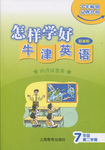题目内容
The Lunar Calendar(阴历)
Modern Chinese use the solar calendar(阳历)as English people do . But at the same time, they use their own lunar calendar. Each lunar year is given the name of one of these animals : the rat , the ox , the tiger , the hare , the dragon , the snake , the horse , the goat , the monkey , the chicken , the dog and the pig . This list lasts for 12 years and then starts again.
Each Chinese month starts on the day of the new moon. And the full moon comes on the 15th day of the month. The New Year always starts between January 21 and February 20. On the last day of the lunar year, there is a big family dinner. All members of the family except married daughters try to be present at this meal, even of they have to travel many miles to reach the home of their parents. Old quarrels are forgotten, and everybody is happy. After the dinner, the children keep awake to welcome the New Year.
The New Year celebrations last for 15 days, from the new moon to the full moon. On the first day, children and unmarried people go to visit their elders .
1. If next year is the year of the dragon, what was the name of last year?
A.It was the year of tiger. B.It was the year of the hare.
C.It was the year of snake. D.It was the year of the ox.
2. Suppose that next Chinese New Year’s Day is on 15th February, when will people have their big family dinner?
A.On February 15 B.On February 16
C.On February 14 D.On February 17
3. The family usually have their big family dinner at the home of ________.
A.the married son B.the married daughter
C.the unmarried son D.the parents
4. People celebrate the New Year ________.
A.for 15 days
B.from the new moon to the full moon in the first month of the lunar year
C.from January 21 to February 20
D.both A and B
5. From this selection we know that each Chinese month is measured by ______.
A.the sun’s revolutions(旋转) B.the moon’s revolutions
C.the earth’s revolutions D.both the earth’s and moon’s revolutions
ACDAB

 怎样学好牛津英语系列答案
怎样学好牛津英语系列答案
APRIL 5 marks the 100th anniversary(周年纪念日)of the sinking(下沉)of the Titanic. In 1997, the movie Titanic was a huge hit all around the world. Now, the 3-D version of the movie will come to Chinese theaters on April 10.
As anyone who has seen the movie knows, the Titanic struck an iceberg(冰山) and sank on its first voyage in 1912, killing 1,517 people. A century after the accident, scientists have found something new to blame(负责任) for the sinking: the moon. Donald Olson, a Texas State University physicist, led a team of astronomers(天文学家) to examine the moon’s role, according to Reuters.
Normally, icebergs stay in place and cannot move until they melt enough or a high tide(潮汐) frees them. A single iceberg can become stuck many times on its journey southward. The process can take several years.
According to Olson, a hundred years ago the moon made its closest approach to the Earth in more than 1,400 years. This caused the moon to have a much stronger pull on the Earth’s oceans than usual, which created a super-high tide. The tide pushed icebergs from shallow waters off the coasts of Canada’s provinces, Newfoundland and Labrador, into the Titanic’s way.
“Of course, the final cause of the accident was that the ship struck an iceberg,” Olson told Reuters. “It went full speed into a region with icebergs, but the lunar connection(月亮的联系) may explain how an unusually large number of icebergs got into the path of the Titanic.”
The research team will publish their research in the April issue of Sky & Telescope magazine.
根据短文内容,选最佳择答案,并在答题卡上按要求作答。
【小题1】 How many people lost their lives in this accident?
| A.Over 2,000 people. | B.About 100 people. |
| C.More than 1,500 people. | D.We don’t know. |
| A.航行 | B.飞行 | C.划船 | D.游泳 |
| A.Icebergs move only when the tide frees them. |
| B.An iceberg can stop for some time during its travel. |
| C.An iceberg will move as soon as its melts. |
| D.It takes an iceberg several months to leave its place. |
a. the moon b. the tides c. too many passengers
d. the high speed of the ship e. going the wrong way f. the iceberg
| A.a,b,c,f | B.a,c,d,e | C.a,b,d,f | D.a,c,e,f |
| A.The main cause of the Titanic’s sinking. |
| B.The 100th anniversary of the Titanic. |
| C.The moon’s great influence on the Earth’s tides. |
| D.The moon’s role in the sinking of the Titanic. |




